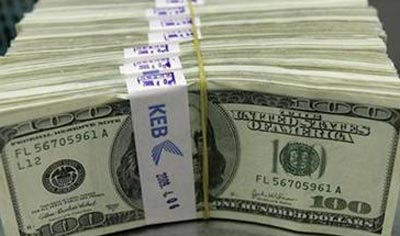Friday, 24 July 2015 20:49
 NEW YORK: The US dollar rose against most other major currencies on Friday on data pointing to sluggish overseas economic growth, while the Australian dollar sagged to a six-year low after a Chinese manufacturing gauge fell to its weakest level in 15 months.
NEW YORK: The US dollar rose against most other major currencies on Friday on data pointing to sluggish overseas economic growth, while the Australian dollar sagged to a six-year low after a Chinese manufacturing gauge fell to its weakest level in 15 months.
Recent US figures have supported the notion that the Federal Reserve sees the economy as strong enough for it to end its near zero interest rate policy as early as September, an action that dollar bulls have betting on since last year.
“Worries about global growth have been rekindled. That has sparked a play into the dollar,” said Joe Manimbo, senior market analyst at Western Union Business Solutions in Washington.
The flash Caixin/Markit China Manufacturing Purchasing Managers’ Index (PMI) dropped to 48.2, the lowest since April last year, while Markit’s PMI gauge on the euro zone fell from a four-year high to 53.7 in early July. The dollar index was last up 0.2 percent at 97.321, reducing its weekly decline to 0.6 percent.
The greenback retreated from its earlier highs as US stock prices turned lower, on track for fourth straight losing session.
The euro slipped 0.2 percent to $ 1.0963, while the greenback dipped 0.1 percent to 123.72 yen.
On the week, the dollar was down nearly 0.3 percent against yen but up 0.2 percent versus the euro.
Fed policymakers may provide clues on a rate “lift-off” in a statement after they meet next week.
Some analysts said there are adequate risks to cause the Fed to refrain from raising rates this year, including turmoil in the Chinese stock market, and a renewed drop in oil and other commodity prices. Friday’s news of a surprise 6.8 percent drop in new-home sales in June was a reminder that the US economy, while faring better than most others, is far from robust.
Among other major currencies, the Aussie dollar, often used as a liquid proxy for China trades, fell more than 1 percent to $ 0.7260, a six-year low.
China’s closely controlled currency fell after Beijing said it would relax its trading bands against the dollar, but was up slightly in later trading.
Other currencies linked to global commodities prices also were under pressure because of the weak Chinese PMI data.
The New Zealand dollar was down 0.5 percent at $ 0.6572. Worries about Chinese demand sent Brent crude prices in London to near a four-month low at $ 54.50 a barrel and copper prices to six-year low of $ 5,191.50 a tonne.




























